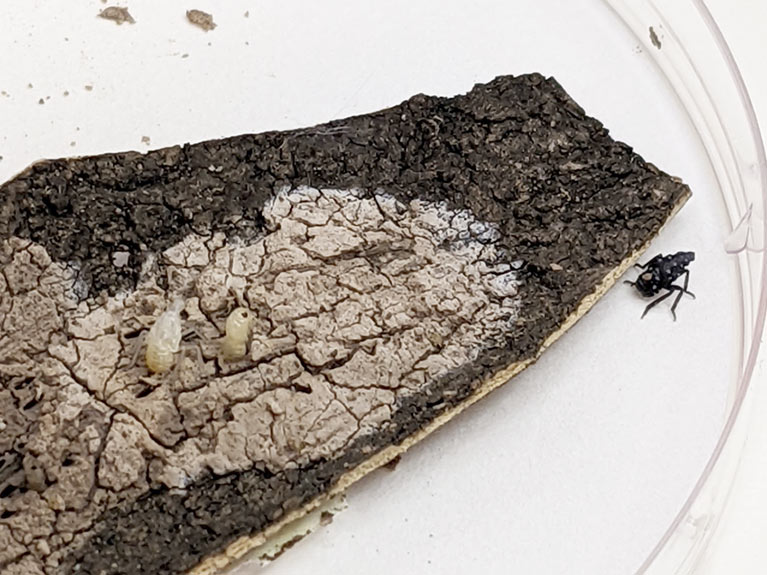
Sault Ste. Marie, Ontario – Spotted lanternfly is an invasive insect that feeds on more than 100 plant species, including grapevines, which can be significantly weakened and sometimes killed by heavy feeding. It has been spreading throughout the United States since 2014, with a recent detection just across the Canadian border in Buffalo in 2022. Spotted lanternfly also targets black walnut, maple, and fruit trees, as well as hops plants, posing a threat to agriculture, beer, wine, and other industries in Ontario.
While spotted lanternfly has not yet been established in Canada, the potential arrival of this high-risk invasive insect is concerning for the health of vineyards and for plant health more broadly in Canada. This agricultural pest tends to feed in swarms and excretes a sticky, sugary substance called honeydew, which is a nuisance to people and fosters sooty mold growth on plants. Spotted lanternfly poses a particular threat to the grape and wine industry, which is estimated to be worth $5.9 billion in the province of Ontario alone. This pest also has the potential to affect the apple, hops, tender fruit, horticulture, and forestry industries as well, and outdoor recreation in parks and other urban green spaces may also be negatively impacted.
The Invasive Species Centre is delivering a free workshop on spotted lanternfly and its preferred plant host, tree-of-heaven. Please come to learn how to recognize spotted lanternfly, its impacts, vectors of spread, monitoring, and how to report sightings. Workers in the agriculture, horticulture, and forestry sectors, municipal and conservation authority staff, gardening and naturalist group members, post-secondary students, and any interested members of the public are invited to the free Spotted Lanternfly Workshop taking place on Thursday, August 3, 2023 from 6:30-8:30 p.m. at the Bloomfield Town Hall.
“Though not yet detected in Canada, it is of crucial importance for all of us to be on the lookout for spotted lanternfly now, as it could arrive at any time. Knowing how to recognize and report spotted lanternfly can enable early detection and rapid response and decrease the risk of impact to Ontario’s vineyards, orchards, and forests,” says Emily Posteraro, Program Development Coordinator at the Invasive Species Centre.
Additional Resources:
- Spotted Lanternfly Species Profile
- Tree-of-Heaven Species Profile
- Wine Growers Ontario – Economic Impact
